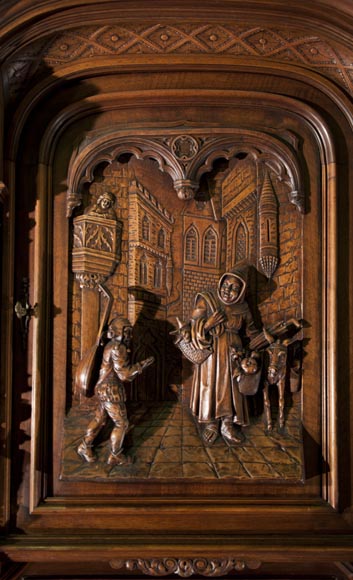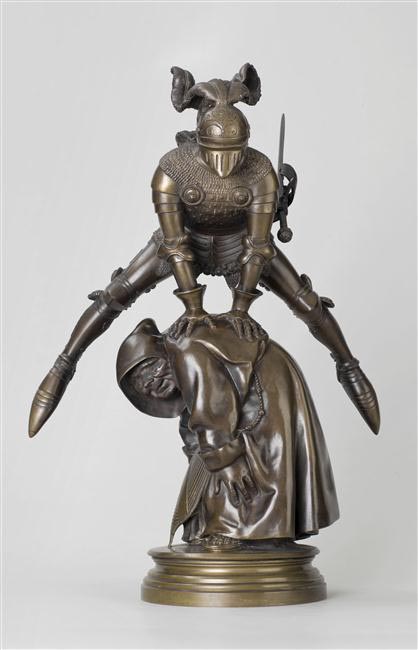Style Troubadour
скачать PDFThe great vogue for the Middle Ages and the Renaissance was already evident at the end of the eighteenth century, and reached the masses at the beginning of the 19th century, invading the decorative arts: not only the fine arts but all kinds of objects were decorated with knights’ helmets, crenelated towers and pretty damsels. The fireplace area is not in left out, enabling the manufacturing of picturesque hoods and monumental overmantel , painted in the manner of the great seigniorial rooms. Hence, Viollet-le-Duc imagined a fireplace decorated with knights for the Empress's room at the Chateau of Pierrefonds, about 1857.
This frenetic fashion for a legendary past brings every year a lot of paintings to the Salon, that quickly give rise to the word tinged with irony of "Troubadour style". It is considered that one of the first troubadour paintings is exposed in 1802 by Fleury-Richard: Valentine of Milan mourning the death of her husband. The historical episode is treated there by an anecdotal moment, taken on the instant, and making the scene more lively and intimate. Paul Delaroche, Eugene Dévéria, Alexandre-Evariste Fragonard, Pierre Revoil, Drölling, Ingres or Isabey are among the many painters who defended this style.
This great fashion thus radiates under the Restoration, having seduced the Duchess of Berry and the Countess of Osmond. Indeed, it is partly a reaction to the revolutionary violence, valuing the medieval Christian past in the wake of Chateaubriand, who published Genius of Christianity in 1800. Painters, engravers and sculptors frequent the French Museum of Monuments created after the destruction of the Revolution. But this fashion is far from affecting only the nostalgic and pious souls, becoming an inexhaustible source of dreams until the end of the nineteenth century. In Paris, important shops spread the taste, notably the tablemaker Alphonse Giroux but also the Escalier de Cristal.
Born at the same time as the Neo-Gothic style, it is not uncommon for works to be Neo-Gothic as well as Troubadour. However, the term Neo-Gothic was born to describe architecture, and applies by extensions to all references to the Gothic style in ornamentation, especially the lancet archs. On the other hand, the Troubadour style, born from painting, covers much more mixtures and fantasies. It can extend in particular to representations of the Renaissance, thus intersecting the Neo-Renaissance style. The representation of scenes often dominates, the artists taking passion for the representation of episodes taken from the life of Saint Louis, Chevalier Bayard, Henri IV or Francis I; but also inventing imaginary knights and fantastic animals.


















